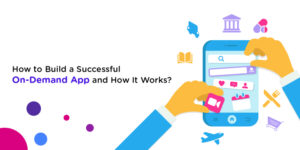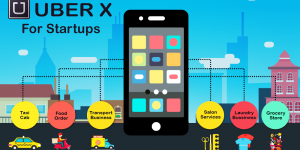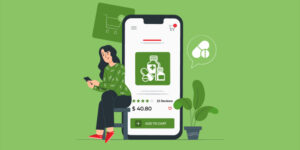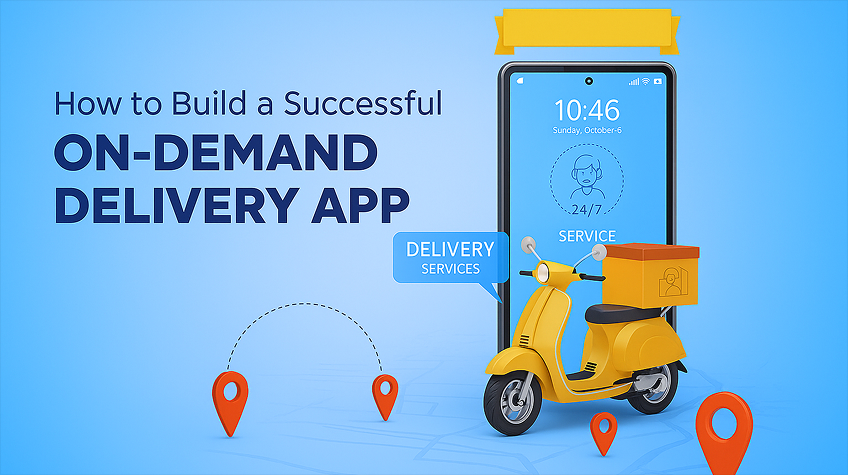
Delivery apps have radically changed how we shop, eat, and get things done. Be it food, groceries, or medicines, people have fast and steady delivery at their doorstep now. This blog will take you through the process of developing a successful on-demand delivery application, from planning to launch.
Convenience is everything in today’s busy world, as we desire that our food, medication, groceries, and even day-to-day stuff should be delivered quickly and reliably. This increased demand has resulted in enormous opportunities in the on-demand delivery app market. As a startup or existing company, developing an app for your delivery can assist you in grabbing this opportunity.
However, to create a successful on-demand app, one should not only have a good design but also be able to plan it, use the correct technological stack, implement useful functions, and make the journey of user as convenient as possible. You must also know your target market and trends.
This guide highlights all the needed steps to create a successful on-request delivery app solution, to help you in turning your idea into a successful digital solution.
Steps to Create a Successful On-Demand Delivery App
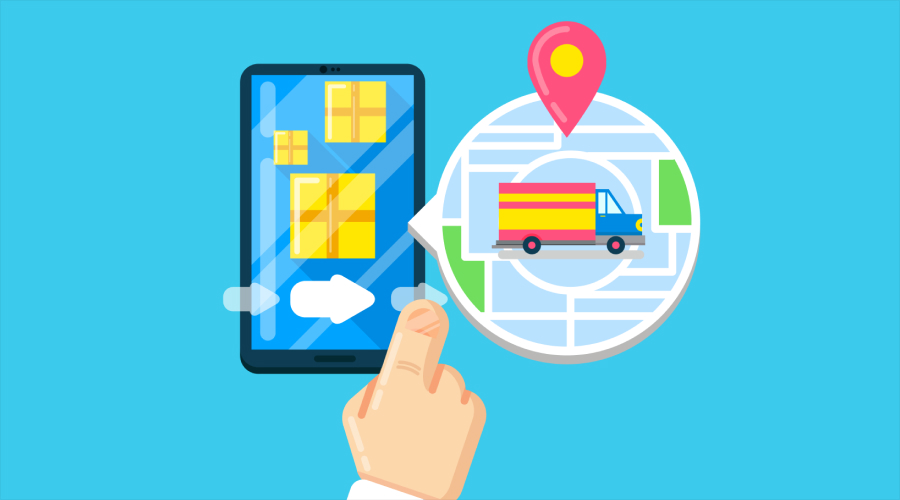
Step 1: Understand Your Market and Niche
It is good to know the target audience as well as the niche industry that you would like to serve before development. The on-demand industry has a number of delivery services that include food deliveries, grocery deliveries, pharmacies, and couriers, and home-based services such as laundry and repair. You must carry out a study of your competitors as well as the preferences and trends of the customers in the region. Find out what people like or dislike in current apps in your field.
Determine the issues that they encounter and consider how your application will eliminate them. Having a unique value proposition will give you an advantage over others, whether it is in terms of speed of delivery, customer service, or prices charged. This is the first step towards the success of your app.
Step 2: Choose a Business Model
The model of your business influences the way your app generates revenue and functions. There are several options that you can select as a revenue model, including a commission-based model, a subscription-based model, a freemium model, or an ad-based model. Another decision you have to make is whether you will develop an aggregator platform (with many sellers selling their services) or a single-store model.
Collaborating with an experienced mobile app development company can help you finalize your business model and transform it into a functional architecture that aligns with your goals. The option is up to you, but it varies depending on the target audience, an initial budget, and plans. Choosing an appropriate business model in the early days will guide you to design your app with the priorities and payment methods fully defined.
Step 3: Define Key Features for All Users
An effective on-demand delivery app should incorporate basic components for the main user groups, including customers, delivery agents, service providers, and an administration panel. The customers must be able to register, search goods or services, order products, pay, and track deliveries. Features like login, list of assigned orders, GPS-based navigation, and order status updates are necessary for delivery agents.
A professional UI/UX Design Service can help you structure these features with a user-friendly flow and high usability. Listing and accepting or rejecting orders, as well as viewing reports and managing listings, are functions that should be available to service providers or vendors. Lastly, the app owner must be able to control users, orders, payments, reports, and promotions on the admin panel.
Step 4: Choose the Right Technology Stack
Technology stack matters for performance, scalability, and security. Swift is the language in mobile app development employed in iOS applications, and Kotlin or Java for Android apps. For saving time as well as money, you can also employ cross-platform frameworks like Flutter or React Native, since with a single code base, you can develop applications for both platforms.
Choosing the right tech stack for mobile app ensures that your app runs efficiently, handles traffic, and remains scalable. On the server side, Node.js, Python, or Ruby on Rails can also be the most trending options to implement a proper server foundation. To store the data about the user and the order, PostgreSQL and MongoDB databases will be utilized to store the information on the user and the order, and the cloud platforms, including AWS, Azure, or Google Cloud, will promote the convenience of implementation and ease of expansion. To add capabilities, like location tracking in real-time, providing secure payments, and notifications, you may apply third-party APIs, e.g., Google Maps, Stripe, and Firebase.
Step 5: Build an MVP (Minimum Viable Product)
Designing a Minimal Viable Product (MVP) is the technique to release your application with the largest share of functionality and thus learn the viability of your idea in a short period and at minimal cost. It also has simple features such as making transfers, registering members, placing an order, making payments, and tracking. MVP allows you to get feedback from actual users, find out where to improve, and minimize the risks of development. After it has been validated, you can gradually add higher sophistication of features based on user needs and their responsiveness to those features.
Step 6: Focus on User Experience (UX)
A natural and fluent user experience (UX) is the key aspect of retaining user engagement. Your app must be fast, clean, and navigationally easy. It is easy with clear icons, fonts that are legible, and simple checkouts. For user testing, use real people to discover the pain points and rectify them early. Having a good UX will promote trust, retention, and referral motivation to your users. Consider working with a UI/UX Design Service provider to ensure your design is not only visually appealing but also highly functional.
Step 7: Add Secure Payment Options
Making payments is one essential element of any delivery app, and the safety of payments can never be compromised. You must provide multiple payment methods such as credit or debit cards, UPI, electronic wallets (e.g, PhonePe, Paytm), and even cash on delivery, where possible. You must make sure that you are prioritizing safe trades in trusted and PCI-compliant processing with sites like Stripe, Razorpay, or PayPal. Encrypt user information to prevent a breach, as well as ensure their trust. Ensure that the payment procedure is fast and free of errors. Show payment acceptance and enable users to trace cancellations or refunds when using the application.
Step 8: Implement Real-Time Order Tracking
Order tracking in real-time is one of the features that any delivery application must have. This makes customers feel secure in knowing the status of their orders and their location. The customer would be able to track when the order is picked up and by what time the order would be delivered using GPS and map integration features. It helps to gain the trust of your customer, minimize the support requests, and increase satisfaction with the delivery experience in general.
Step 9: Plan Your Marketing and Launch
The well-developed marketing and launch strategy helps your app to get to the target audience. Begin with pre-launch efforts by social media, email subscribers, and teasers. Use discounts or referral bonuses to get the first users. Work together with local businesses and influencers to increase exposure. Once launched, invest in digital advertisement, App store optimization (ASO), and push notifications to keep the users and increase downloads.
Step 10: Monitor, Analyze, and Improve
Once you have released your app, track its performance through analytics. Measure trends, retention, order count, and service requests of the users. Get feedback through reviews and surveys, with this information, you can establish bug fixes, feature improvements, and performance enhancements. Consistent improvement on the basis of feedback from real users will ensure that your app does not go out of the market due to changes in the market.
Also Read: How to Build a Car Maintenance App in 2025: Features, Process & Costs
How Much Does It Cost to Build an On-Demand Delivery App?
| Components | Estimated Cost (USD) |
|---|---|
| MVP Design & Development | $10,000 – $25,000 |
| Full-Feature App | $30,000 – $80,000 |
| Backend Infrastructure | $5,000 – $15,000 |
| Third-Party API Integration | $2,000 – $5,000 |
| Testing and QA | $3,000 – $7,000 |
| Marketing and Launch | $5,000 – $20,000 |
Also Read: How to Develop a Transportation App in 2025: In-Depth Guide
Success Tips for On-Demand Delivery Apps
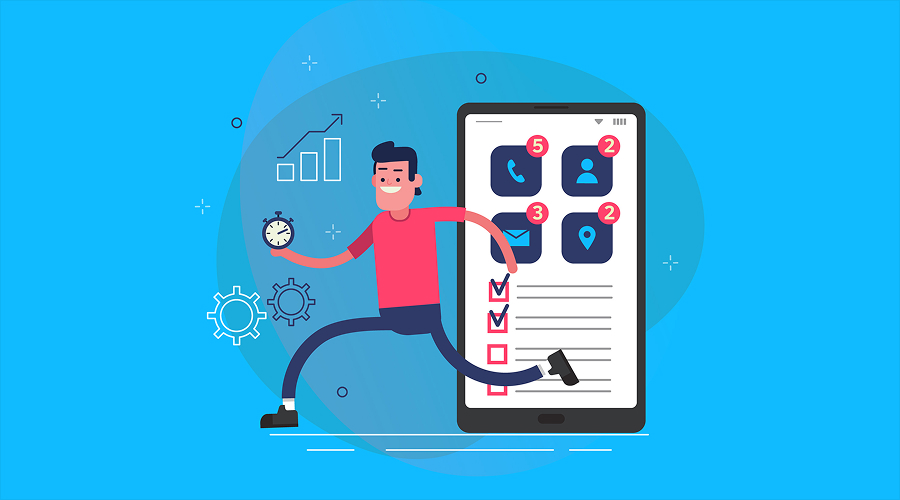
- These are some suggestions to design and develop your app successfully:
- Begin with a single niche and a single location, and then scale up
- Create relations with local delivery fleets or local vendors
- Make your UI/UX clean and bug-free
- Provide the best customer service
- Concentrate on the speed and precision of delivery
- Gather and act on user feedback
- Utilize analytics to inform data-driven decisions
- Keep track of the trends and competitor actions
Conclusion
Developing a successful on-demand delivery app is both an inspiring and tough process. It is a process of careful market research, clever feature design, robust development, and continuous improvement. Be it food, groceries, or any other kind of delivery service, the main idea should be to provide a solution that will genuinely help customers by being convenient and affordable.
You should begin small, test your concept using an MVP, and take it to the next level, according to feedback. Focus on the speed, quality of service, and customer experience. Your app can be the next sensation of the on-demand economy, provided you approach it in the right manner.



